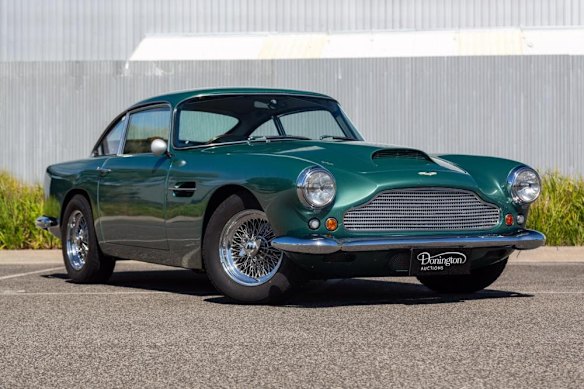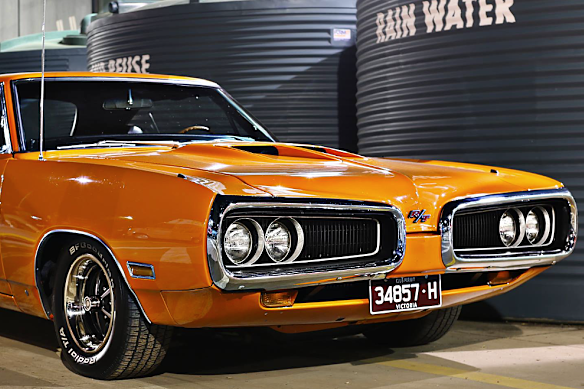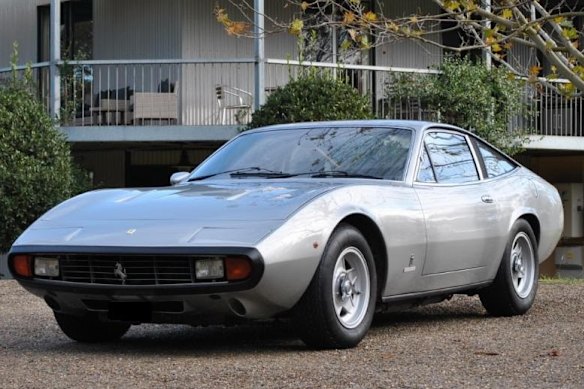Since auctioneer Damien Duigan was in his teens, he’s been following the rise and rise in the value of classic cars.
His father owned an MGA Twin Cam circa 1959 in the 1960s, then switched to an Alfa Romeo 2600 circa 1964, before moving to a Fiat 132 to accommodate his family’s needs. It’s easy in hindsight to say, “I should have…” – but Duigan says that purchasing an Alfa Romeo 25 years ago would have meant a significant increase in value over the years.

A 1960 Aston Martin DB4 Series II Coupe.Credit: Donington Auctions
“An Alfa Romeo then would have cost between $15,000 and $20,000 and would now be worth approximately $75,000. Most new cars that aren’t classic generally devalue once you leave the showroom,” he says.
Duigan, from Donington Auctions, which has showrooms in Melbourne and Sydney, says the value of some of these classics obviously comes down to their condition, but also their provenance.
“If a certain car raced at Le Mans or the Mille Miglia [1000 miles in Italian], the value certainly increases,” Duigan says.
While classics from the 1950s through to the ’70s are still within reach, other cars such as Ferraris or Aston Martins from the 1960s can easily set you back $500,000.

A 1972 Ferrari 246 GT Dino Coupe.Credit: Donington Auctions
For those not in this buying echelon, Duigan suggests looking at classics such as the Austin-Healey or a Triumph in the $30,000 to $60,000 range.
But if there’s the ability to “splurge”, one could easily spend $5 million on a Lamborghini Miura that was produced between 1966 and 1972. Designed by Marcello Gandini, the vale of this car can also be attributed to the position of the engine, located behind the driver.
One sector of the classic car market that has skyrocketed in value has been closer to home. The Holden Monaro and Torana originally came with price tags of between $10,000 and $20,000.
“Today, you would need to spend $200,000 on these cars, say the [Ford] GT HOs, with cars that competed at Bathurst adding not just to the cache but the value,” Duigan says.
There were also muscle cars produced in the United States. Phil, who asked that his surname not be used, accommodates his muscle cars in a purpose-built garage, separate from the house and designed by RN+S Architects on the fringe of Melbourne.

The Dodge Coronet 1970 R/T in “go mango” colouring. Credit:
He purchased his circa 1970 Dodge Coronet R/T 10 years ago from a US dealer, paying $75,000 at the time. In mint condition as it was bought fully restored, the orange (referred to as “go mango”) Dodge is now estimated to be worth between $140,000 and $150,000.
“There’s a considerable audience interested in the muscle cars – just look at the popularity of the television series Graveyard Carz,” says Phil, who enjoys taking his car out for special weekend drives.
Unlike new cars, which generally devalue – although since COVID-19 many used cars have increased in value – these classics have proved a great investment as well as being nostalgic for their owners, with many such trophy cars garaged in amazing spaces and treated with kid gloves.
Most people drive their cars into the garage, shut the door and turn on the television. But those with “classic cars”, produced from the 1930s, would be remiss if the garage lights were simply switched off at the end of a day.
Whether it’s an MGA Twin Cam from the late 1950s or an Alfa Romeo 2600 from the mid-to-late ’60s, there needs to be the right home, with sufficient “breathing” space for the owner’s car collection and appropriate illumination so they can be enjoyed day and night.
B.E Architecture is creating a large basement, or more correctly, a showroom for a large home in inner-city Melbourne. Unlike prestige car showrooms dotted along major highways, this will be for private viewing only by family and friends.
Designed to comfortably fit up to 12 cars, this basement will include a full-length glazed wall to allow for views into a garden and provide cross ventilation.

A 1972 Ferrari 365GTC/4.Credit: Donington Auctions
“It’s certainly not just a large basement. It’s about creating an experience,” says architect Andrew Piva, director of B.E Architecture, pointing out the barrasol ceiling embedded with lighting that will stretch over the 300-square-metre subterranean space.
Expert tips on how to save, invest and make the most of your money delivered to your inbox every Sunday. Sign up for our Real Money newsletter.